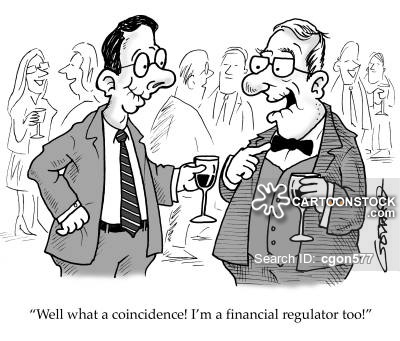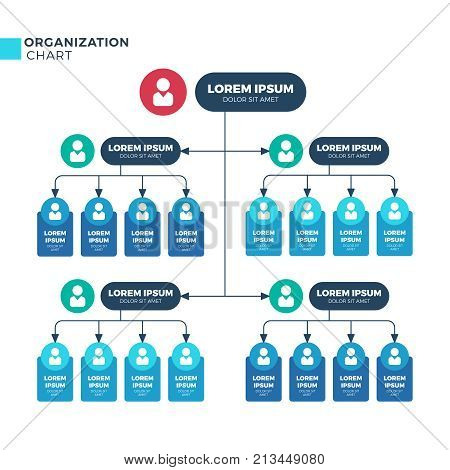Contents:


Bar graphs are a convenient way to show data change in a given time. We will discuss histograms and frequency polygons in detail in the upcoming sections. The following data illustrates the distribution of weight of 30 machines.
Mass spectrometry imaging to explore molecular heterogeneity in … – pnas.org
Mass spectrometry imaging to explore molecular heterogeneity in ….
Posted: Mon, 11 Jul 2022 07:00:00 GMT [source]
Grouped bar graph usually present the information in the same order in each grouping. Stacked bar graphs present the information in the same sequence on each bar. Like a bar graph, a pie chart is also a graphical representation. While a bar chart contains a bar to represent different data, a pie chart uses a circular figure which is divided into different sections depending upon respective statistical data. Histograms also show the relative frequency of events similar to a bar graph.
Bar graphs are used to represent discontinuous data. It is easier to represent frequency distributions of continuous and non continuous data on a column graph than a line graph. Difference between bar chart and histogram.If you are eager to learn more about data visualization, learn data science courses from top institutes. Another important difference between Bar Graph Vs Histogram is the way that they are labeled and scaled. Bar graphs typically have labeled axes, with one axis showing the categories and the other axis showing the values or frequencies. The frequency distribution of data can be represented in numerous ways.
Bar Graphs and Histogram
The width of bars in a bar graph has to be the same. The bar is positive when the MACD line is above the signal line and negative when the signal line is above the MACD line. A MACD graph sloping upwards represents upward momentum, whereas a graph sloping downwards represents downward momentum. Here, we need to take readings of the two bars showing 6-10 servings per week category.
- In contrast, a histogram is used to display continuous data, where the data is measured on a continuous scale, such as weight, height, or time.
- The above three points show us “why use a histogram instead of a bar graph”.
- A bar graph uses rectangular bars to represent its data, whereas a line graph uses lines to represent a chart.
- A Probability Histogram shows a pictorial representation of a discrete probability distribution.
- A unimodal histogram has only one data peak or hump, while a bimodal histogram has two data peaks.
The right-what differentiates histogram from a bar chart one has the mode closer to the left of the graph and smaller than either the mean or the median. The mean of right-skewed data will be on the right side and will be a greater value than either the median or the mode. A right-skewed histogram has a peak that is left of center and a gradual tapering to the right side of the graph. A left-skewed histogram has a peak to the right of the center, gradually tapering to the left side.
Bars with a difference
It can be used to show data about the population, purchases, or anything else that can be measured on a scale. In a bar chart, the height of the bar represents a value, whereas, in a line graph, various series of connected lines represent the given data. Different colors represent different values in this type of chart as it helps identify different categories.

It allows you to view a vast volume of data in a tabular form that is difficult to understand. The width of bars in a histogram need not be the same. The components of the histogram are numbers to be listed as data range. Elements are clustered to be regarded as ranges in that sort of graph. The trading strategies should be back tested on data to understand if those strategies work or not. You should streamline your trading strategies and then back test those strategies to understand the chance of success.
So in this kind of graph, every rectangular bar represents the whole, and each segment within the bar represents different parts of that whole. The bar chart below shows the average household income for the four “New” states that are- New Jersey, New Hampshire, New York, and New Mexico. Variables represented on a histogram can be non-discrete. A MACD histogram plots the moving average convergence and divergence on a graph. It demonstrates the difference between the signal line and the MACD line. For example, if there is a 100 point difference, the graph will pictorially represent the difference.
What is a Histogram and Why Use a Histogram Instead of a Bar Graph?
A uniform distribution reveals that the number of classes is too small, and each class has the same number of elements. A uniform-shaped histogram shows data that is consistent. In other words, a diagram involving rectangles whose area is proportional to the frequency of a variable and width is equal to the class interval. The above three points show us “why use a histogram instead of a bar graph”.
Representation of information by using horizontal and vertical bars in the bar chart also called column charts. A bar graph is commonly used for displaying the financial analysis of the numerical data. Yes, both bar graphs and histograms can be displayed horizontally. In a horizontal bar graph, the categories are displayed on the y-axis, and the quantity or frequency is displayed on the x-axis. In a horizontal histogram, the intervals or ranges are displayed on the y-axis, and the frequency or relative frequency is displayed on the x-axis.
Difference between Bar Graph & HistogramBar Graph In Bar Graph Bars have equal space On the y-axis, we have numbers & on the x-axis, we have data which can be anything. Histogram In Histogram Bars are fixed On the y-axis, we have numbers & on the x-axis, we have data which is continuous & will always be number. Labels to determine the meaning of every bar in the chart. This could either be a key or a simple label below the horizontal axis of the bar chart. The histogram depicts the frequency distribution of a continuous variable.
Bar graphs are a convenient method to represent different sets of data. Apart from this, these types of graphs are easy to describe and easily understood by the reader. The above explanation helps one understand the different types of paragraphs and the correct way to represent data in a bar chart. These types of graphs are a popular way of expressing industrial data and experimental data.
A bar chart is a graphical representation of data that compares distinct variables. Organization and graphical representation of data make the use and understanding of data easier. We generate loads of data, and to make sense of the data, we need to analyze the data. Analysis of data is made easier with the help of graphs and charts.
Explore Free Courses
These types of histograms are generally quite easy to read. The height of the column of the histogram indicates the size of the group which is defined by the column label. The column label can be a range of values or a single value. The columns are positioned over a label that is used to represent a continuous, quantitative variable. The columns that are positioned over a label are used to represent a categorical variable.
This histogram has a prominent mound in the center and very similar tapering to its left and right. This also means that the data is unimodal (a single-mode identified by the peak). In this case, the mean, median, and mode are all the same values. A unimodal histogram has only one data peak or hump, while a bimodal histogram has two data peaks.
What is a bar graph, and how to make a bar graph?
By understanding the differences between these two types of graphs, you can choose the right one for your data and create more informative and effective visual representations. Horizontal bar graphs are referred to the graphical charts where the data is represented horizontally along the X-axis. These horizontal bars represent the statistical data and project the values after giving data along the X-axis. Histogram basically refers to a graphical representation; that displays data by way of bars to show the frequency of numerical data. A bar graph is known to be a pictorial representation of data that uses bars to compare different categories of data. Horizontal bar graphs represent the data horizontally by using rectangular bars that show the measure of data.
The data variables or categories are written and then the rectangular bars are horizontally drawn on the y-axis. The x-axis shows the values of different data variables in the form of bars equal in length to the values. The lengths or heights of the bars generally denote the value of the variable and these graphs can also be used to compare certain quantities.
- These bars signify the measurement of data and the representation of another statistic.
- Column graphs are generally used to compare the difference between values.
- They consist of an axis and a series of labeled horizontal or vertical bars.
- A bar graph is a comparatively easy chart to represent out of various other graphical representations.
They are useful for comparing the relative sizes of each category, and the bars can be color-coded or labeled to make them easier to read. While there are many methods to represent a given data set, bar graphs are the most common ones. These graphs contain either vertical or horizontal bars, which have different lengths depending upon the data they portray.
A communal catalogue reveals Earth’s multiscale microbial diversity – Nature.com
A communal catalogue reveals Earth’s multiscale microbial diversity.
Posted: Wed, 01 Nov 2017 07:00:00 GMT [source]
If there were a lot of pebbles to be weighed and recorded the chart would be very large and still show no useful information. Column graphs are generally used to compare the difference between values. Bar graphs are most suitable when the changes are bigger in the case of time estimation.
What’s the Difference Between a Pareto Chart and a Bar Graph? – Dailyuw
What’s the Difference Between a Pareto Chart and a Bar Graph?.
Posted: Thu, 07 Apr 2022 07:00:00 GMT [source]
The last step is to draw the bars that should satisfy the theoretical data and represent each category respectively. A graph contains a grid network of X-axis and Y-axis that intersect at angles perpendicular to each other. The coordinate grid formed by the intersection of the horizontal X-axis and the vertical Y-axis helps a person locate coordinate points on a graph. To overcome these problems, the data is arranged into groups of equal size. Few disadvantages of a column graph, complex data is difficult to show on a column graph and can be misleading if the categories to compare are wrong.
Each category or group is represented by a separate bar, with the height or length of the bar indicating the quantity or frequency of data in that category. Histogram refers to a graphical representation; that displays data by way of bars to show the frequency of numerical data. A bar graph is a pictorial representation of data that uses bars to compare different categories of data. In summary, Bar Graph Vs Histogram are both important tools for visualizing data, but they are best suited for different types of data. Bar graphs are ideal for displaying discrete and categorical data, while histograms are better for showing continuous data and the distribution of that data.
Histograms are capable of displaying large datasets and a huge amount of data on graphs. Once you understand the purpose of histograms clearly, you will be able to use them in the right place for better understanding. The use of intervals in the histogram avoids any precision measurement of central propensity being to be computed.
The bars don’t touch each other, there are spaces between them. The bars touch each other as it is a representation of continuous data. The frequencies or observations are grouped together in the form of ranges. A bar graph is a chart that represents data using rectangular bars that are typically spaced apart to represent each category or group.
Moreover, the divisions in a bar chart can be reorganized in any order. A stacked bar graph displays the whole data while also containing different segments of that particular data. Few disadvantages of histogram are, it only uses continuous data ranges and it becomes difficult to read the exact value of the given data. We use a histogram for continuous numeric values, to summarize continuous data over a period of time.
These charts are very useful and different from the bar chart. A histogram represents the frequency distribution of continuous variables. Conversely, a bar graph is a diagrammatic comparison of discrete variables. Bar charts are usually scaled so that all the data can fit on the chart. Bar charts arranged from highest to lowest incidence are called Pareto charts. Normally, bars showing frequency will be arranged in chronological sequence.
